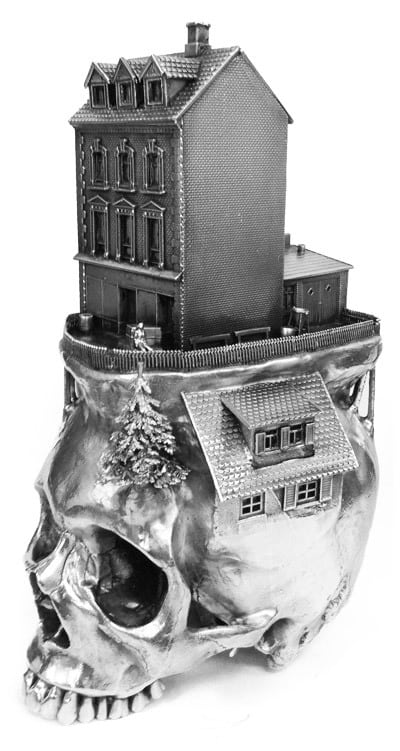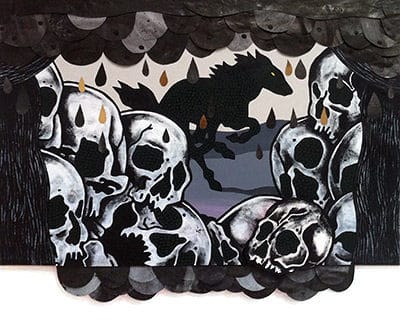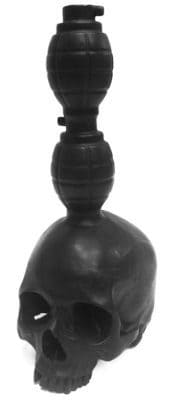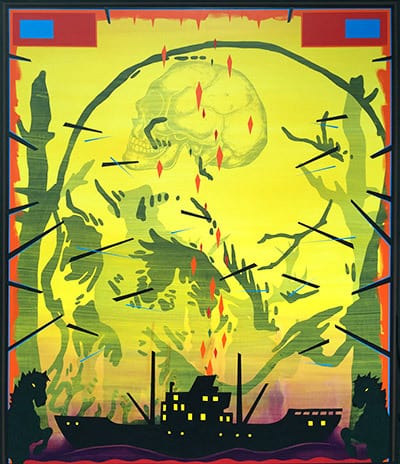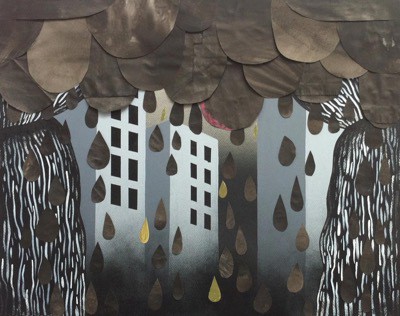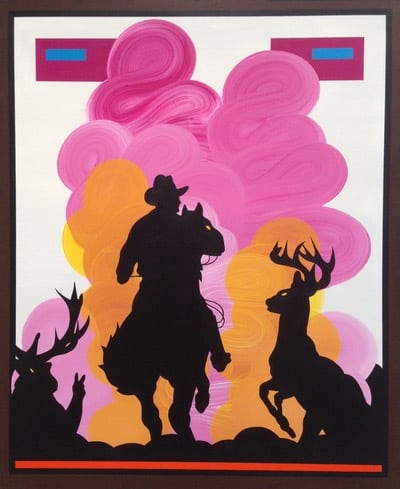Few artists encapsulate the saying “there’s more than meets the eye” than artist Frodo Mikkelsen, whose subtle explorations of nature and the human psyche captivate endlessly. With an interdisciplinary practice spanning painting, sculpture, graffiti and mixed-media, Mikkelsen’s works propose a world simultaneously visceral and logic-defying. Themes of mortality contrast with the eternal, recalling a poignant sense of the fleeting transience of life.
This careful treatment of our mortal impermanence, set against the backdrop of nature’s lasting significance, is a result of the artist’s lifelong search for meaning through his artistic practice. His work is in the collections of the Metropolitan Museum of Art, New York; the Aarhaus Art Museum, Denmark; Bergen Art Museum, Norway; and the Museum of Contemporary Art Krakow (Mocak), Poland. We took time to catch up with Mikkelsen on what he’s working on, highlights from his storied career and his hopes for the future.
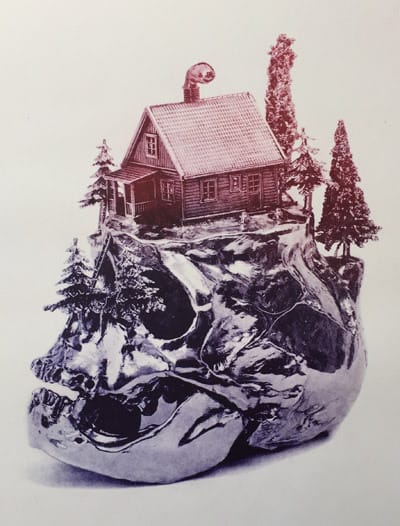
Photogravure print, 2017, 70×50 cm. Private collection.
Audra Lambert: Thank you Frodo for taking time to talk today! Can we start today by talking about your well-known skull/house hybrid sculpture series? How did you get the idea for these works?
Frodo Mikkelsen: Thanks! Well, to start, I began my skull sculptures series about ten years ago. It was a summer day in 2005 and I was out walking when I came across men working on a pothole that was lined with skulls and bones—a common sight in Copenhagen due to the old graveyards for victims of the Plague in olden times. From my perspective, a house that was situated right behind the hole seemed to rest upon the pile of skulls. This wasn’t scary to me, but instead brought to mind the circle of life: we die and are interred only to provide support to the flowers and plants that grow from the ground and encircle houses.
After testing a few materials I fell in love with the the clean, cold look of silver for the piece, and continued working in that vein. The theme of a house surrounded by nature is a recurring part of this work, rising above the skull—for me, it just fits perfectly, and I get goosebumps every time a new piece is produced. The piece that is in the Metropolitan Museum of Art’s collection almost perfectly resembles my childhood home in Sweden, evoking both the preciousness of this memory for me along with the preciousness of the silver that the sculpture is created with.
AL: Can you walk us through how this series interacts with your practice as a whole?
FM: I enjoy working with silverplates, and often use this treatment on old toys from flea markets in New York, Copenhagen and Berlin, or objects found cast aside or found in nature. These objects are frozen in the silver, hiding their secrets. The perfection of every detail frozen in silver may correspond with my Scandinavian heritage as well: perhaps this is why I prefer my work to be clean, flawless. This series continues themes from my practice as a whole on mortality and nature. I’ve always been drawn to skulls as symbols, from pirates to old Western film. As a child, I even collected skulls of foxes and mice I found in the woods when I lived in Småland, Sweden, where I was surrounded by nature. This motif was reinforced after a trip to Mexico where I encountered the Day of the Dead imagery, which marked another step in my continued collection of skull icons.
- Horse, collage, 2014, 60×70 cm. Private collection.
- Warhead, bronze, 2014, 34 cm, Courtesy of Aros – Aarhus artmuseum
AL: Interesting, and how long have you wanted to be an artist? How has your work evolved over your career?
FM: Since I was eight years old, when I announced to my father (who was also an artist; the elder Mikkelsen has since passed away) that I wanted to be an artist and he told me to go for it! He also told me to find my own way through painting, screenprints, sculpture… however I could get my start!
A few years later I saw the film Style Wars in theaters, which is about the New York City graffiti scene. That was key for me. I made my first graffiti piece that same night with old bike paint, what I had at hand—but still, I did it! And I’m still playing with this medium for over 30 years now, even starting a renowned graffiti crew in 1990. Graffiti allows for freedom of expression in a hectic art world pace and I will tag ‘til the end.
From 1990 on I started painting on canvas, trying out different art schools. I’ve developed my practice to where it is today, independently determining the methods and practices I work with and I’ve been a full-time artist now since 2006. During this period I’ve experimented with painting, collage, prints, and sculpture… and I’m continuing to experiment today. I strive to make clean, graphic works, hiding the mess it takes to create, but it’s not always easy. I often incorporate tags into my artworks that people recognize, so that my work is easy to identify!
- 2016, 165×140 cm. Acrylic on canvas. Private collection.
- Houses, collage, 2014, 40×50 cm. Private collection.
- 2014, 120×100 cm. Acrylic on canvas, Private collection.
AL: Are there any artists in particular who have influenced your work?
FM: Many artists have influenced my work; I’m not even sure where to start! A few artists that I’m a fan of include John Kørrner, Tal-R, Fie Norsker, Allan Bestle and Scoppa, and the list goes on…
AL: Thank you for this thorough recount of your practice! What is your current body of work engaging with, and do you have any upcoming exhibitions to share with us?
FM: I’m continuing to work with natural and abstract things, blending them with the figurative, such as with my silhouettes. I like mixing things! Right now I’m working on some kinetic sculptures with my partner-in-crime, Miss Scoppa, and some new silver skull sculptures for the Museum of Contemporary Art in Krakow (Mocak), starting in 2018. Another ongoing project consists of caring for two 15 month old twins! With my artwork, of course, I’m always creating work for private collectors and along with some smaller group and summer shows coming up. I’m always on the lookout for opportunities to show in Copenhagen and beyond, such as in New York. I would love to show more, and I’m ready!
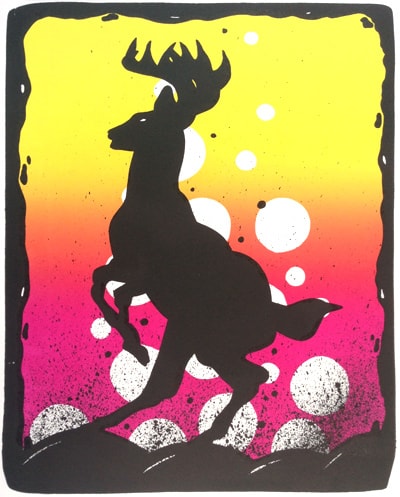
See more of Frodo Mikkelsen’s Work
Following Frodo on Instagram
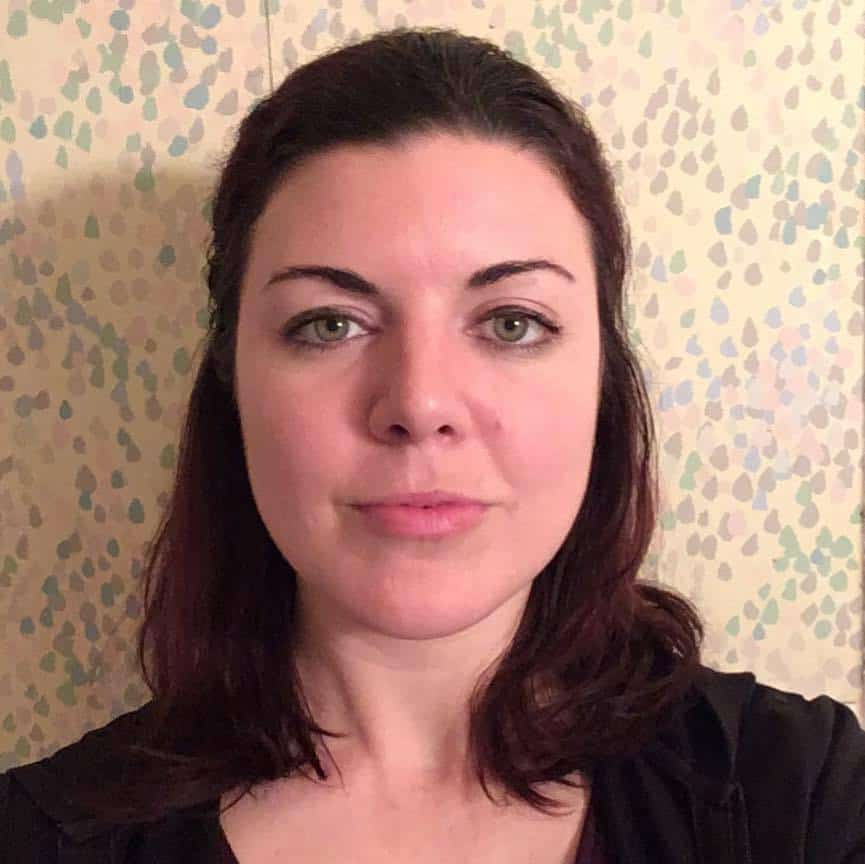
Audra Lambert is a freelance arts contributor and independent curator based in New York City. Her articles can be found in Whitehot Mag, Art Nerd NY, Artefuse, Examiner and more. The author focuses on participatory and public art projects with an emphasis on emerging and established female artists. She is co-founder of alt_break art fair, a nonprofit art fair fostering dialogue between community-based social justice nonprofits and the arts. Currently completing a Master’s thesis in Modern/Contemporary Art at City College of New York, her curated projects and ongoing coverage of interdisciplinary art projects can be found on ANTE. (www.antecedentprojects.com), an online art platform showcasing contemporary arts and culture, which may or may not be secretly run by llamas on Mars.

